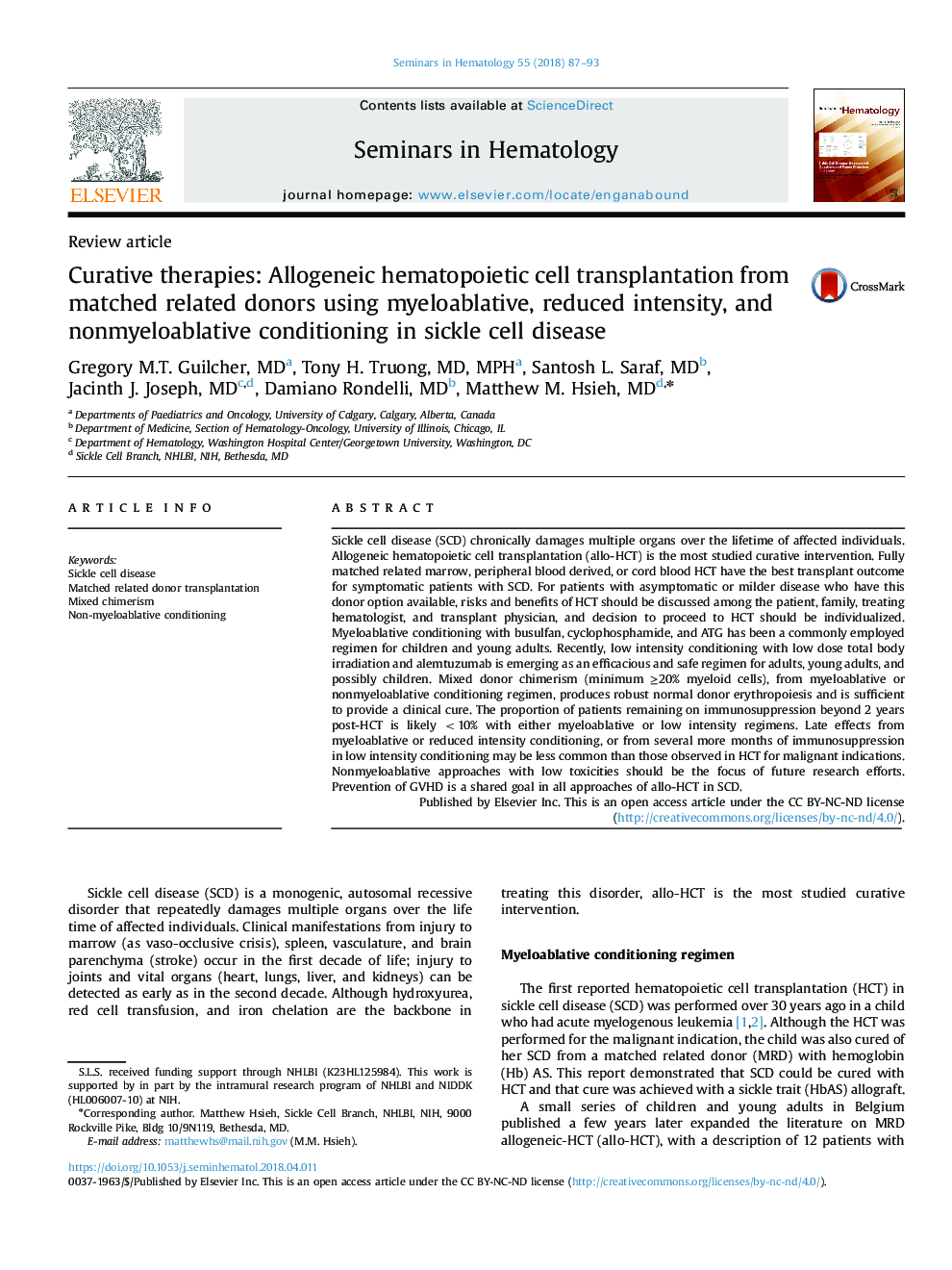| Article ID | Journal | Published Year | Pages | File Type |
|---|---|---|---|---|
| 8734793 | Seminars in Hematology | 2018 | 7 Pages |
Abstract
Sickle cell disease (SCD) chronically damages multiple organs over the lifetime of affected individuals. Allogeneic hematopoietic cell transplantation (allo-HCT) is the most studied curative intervention. Fully matched related marrow, peripheral blood derived, or cord blood HCT have the best transplant outcome for symptomatic patients with SCD. For patients with asymptomatic or milder disease who have this donor option available, risks and benefits of HCT should be discussed among the patient, family, treating hematologist, and transplant physician, and decision to proceed to HCT should be individualized. Myeloablative conditioning with busulfan, cyclophosphamide, and ATG has been a commonly employed regimen for children and young adults. Recently, low intensity conditioning with low dose total body irradiation and alemtuzumab is emerging as an efficacious and safe regimen for adults, young adults, and possibly children. Mixed donor chimerism (minimum â¥20% myeloid cells), from myeloablative or nonmyeloablative conditioning regimen, produces robust normal donor erythropoiesis and is sufficient to provide a clinical cure. The proportion of patients remaining on immunosuppression beyond 2 years post-HCT is likely <10% with either myeloablative or low intensity regimens. Late effects from myeloablative or reduced intensity conditioning, or from several more months of immunosuppression in low intensity conditioning may be less common than those observed in HCT for malignant indications. Nonmyeloablative approaches with low toxicities should be the focus of future research efforts. Prevention of GVHD is a shared goal in all approaches of allo-HCT in SCD.
Related Topics
Health Sciences
Medicine and Dentistry
Hematology
Authors
Gregory M.T. MD, Tony H. MD, MPH, Santosh L. MD, Jacinth J. MD, Damiano MD, Matthew M. MD,
